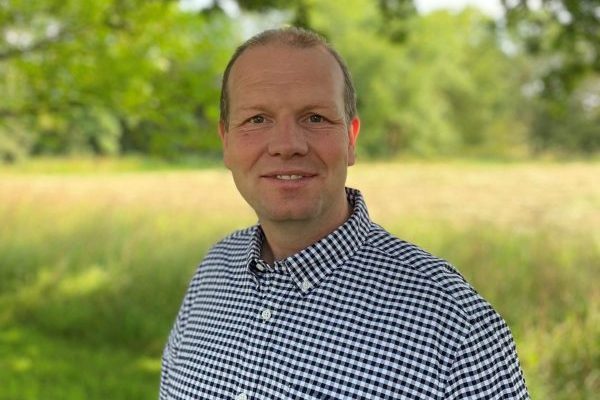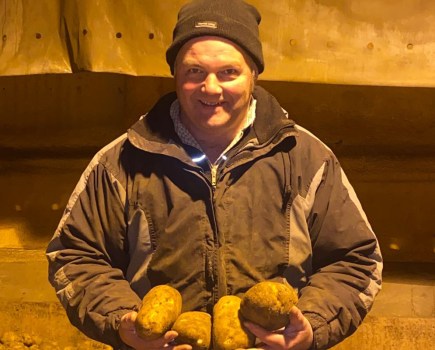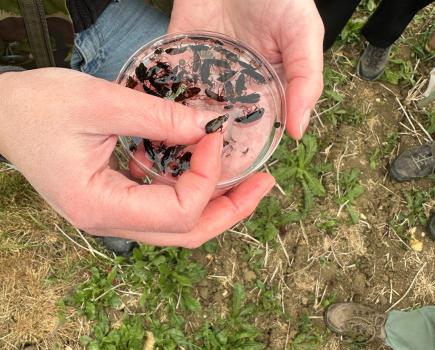By Martin Lines
It’s been a busy summer of conferences, shows and events across the country and I’ve had conversations with many different farmers. It’s become increasingly obvious that they fall into two distinct camps – those who are up for a journey of change, moving to regenerative approaches and engaging with government schemes, and those who are still in the mindset of ‘produce as much food as possible – climate and environmental outcomes aren’t my concern’.
For some there’s almost a head-in-the-sand attitude. ‘We’re not causing any problems and haven’t done so in the past either’. I believe some farmers are unaware of what’s rapidly approaching and the changes that’ll have to be made to meet legal requirements and market demands in the near future. The old saying of ‘standing still means you’re going backwards in business’ has never been truer, and many farmers will soon find the regulation stick tapping them on the back, or access to the market being denied.
Things are changing – producers and retailers are starting to address the legally binding targets and reporting. One major reason companies are now taking an interest in nature-friendly farming is their environmental, social and governance (ESG) commitments. In particular, recording scope-3 emissions makes them accountable for the carbon emissions impact of their broader supply chains.
Many of our major supply chain customers are making commitments to purchase partly or solely from regenerative systems in the very near future. We’ve seen new products such as the Wildfarmed regenerative bread come to major UK supermarkets, for example. The potential impact on market access and consumer recognition is significant; any farmer who isn’t taking steps towards a regenerative system may rapidly find their market access being reduced.
For many of us, the majority of the grain we produce gets lost in the system and we’re not directly accountable. We’ve seen the failed attempt by Red Tractor to launch its Green Tractor scheme, which was created to facilitate the market demand for recording data. This was a nice idea, but instead of hiding behind another scheme that implies farmers may or may not want to take this up at some point, the government has to make it clear that all farms are going to have to undertake carbon auditing and understand the biodiversity baseline on their farms.
We should be recognised by the marketplace and the consumer for our work that’s above and beyond getting our own businesses to net zero. We farmers have the power to make some of the most significant changes to the condition of our landscape if given the right support.
However, planning cropping rotations is becoming increasingly complicated. We’re juggling to keep up to date with who pays the most for which outcome in the various scheme options, what public and private finance is available, and the market conditions. More SFI options have been released ready to be stacked on top of existing options used by our businesses, and new rewards and payments from the private market are becoming available.
It’s increasingly difficult to keep track of everything and ensure we aren’t missing out on opportunities. Many of the actions public money is supporting at the moment will soon become business as usual and the funding will disappear, so it really is a case of making the most of what’s available now to support our businesses and the environmental crises.
We often hear the term ‘public money for public goods’ used to refer to the changing priorities for government, shifting away from area-based payments to Environmental Land Management schemes. However, several recent reports, including the National Audit Office’s review of the Farming and Countryside Programme, show the wide gap between what the government is currently paying for and getting poor value for, and the cost of what is actually required to deliver in the farmed landscape.
The private sector is increasingly eager to help farmers manage their land and businesses more regeneratively and reward our steps towards reducing emissions pollution and supporting nature recovery, not just our yields.
If we’re to thrive during and beyond this transition, we must understand the Environmental Improvement Plan (EIP). Our new government aims to rapidly review the EIP, which contains significant, legally binding targets. Many of these targets mean substantial changes to farming businesses to meet air quality, water quality and environmental improvement goals. It may not be the most exciting reading, but it’s well worth empowering yourself with the knowledge of its impacts on many of our businesses.
To take one example, some of the products we currently use will come under increased pressure, particularly urea fertilisers – which can affect air quality in our town and cities. Understanding and preparing for these changes will ensure we’re well-equipped to navigate the future of farming.
Change can be daunting, confusing, and challenging. But what if we looked at this as an opportunity? With increasing numbers of organisations and influential individuals providing funding, knowledge exchange, and support, harvesting these new opportunities for funding and learning new practices could mean we farmers lead the way on regenerative, nutritious food production and landscape-scale nature recovery at the same time.
This article was taken from the latest issue of CPM. For more articles like this, subscribe here.
Sign up for Crop Production Magazine’s FREE e-newsletter here.




